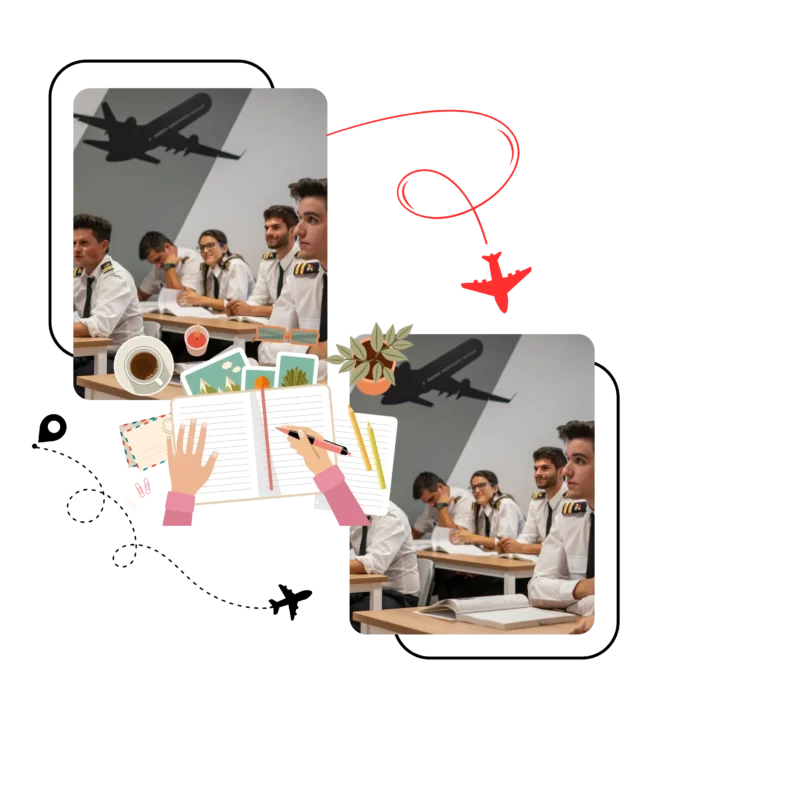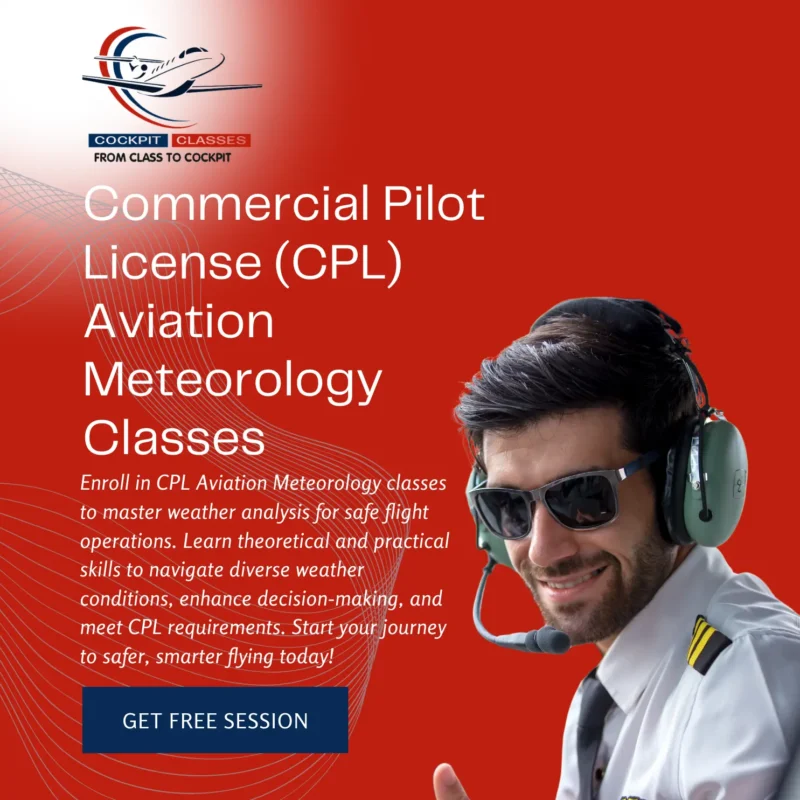Commercial Pilot License
Commercial Pilot License (CPL) Aviation Meteorology Classes
DGCA Certified – Chief Ground Instructor

Commercial Pilot License (CPL) Aviation Meteorology Classes
Unlock the skies with our Commercial Pilot License (CPL) Aviation Meteorology classes. Understanding weather is essential for safe and efficient flight operations. This comprehensive program combines theoretical knowledge with practical insights, equipping aspiring pilots to confidently navigate diverse weather challenges and enhance their aviation expertise.
Key Details:
- Age Requirement: Minimum age of 18 to enroll.
- Educational Qualification: High school diploma or equivalent; some programs may prefer aviation or meteorology coursework.
- Course Duration: Typically spans a few weeks to several months, depending on the institution.
- Prerequisites: Ground school or basic aviation training may be recommended for a deeper understanding of meteorology.
- Certification Outcome: Completion contributes to CPL requirements and improves decision-making in varied weather conditions.
Enrolling in CPL Aviation Meteorology classes is a vital step for aspiring pilots. These courses provide the skills and knowledge to understand weather patterns and their impact on flight safety. Master meteorological concepts, make informed decisions, and ensure safer flights. Take the next step toward advancing your aviation career today!


Overview of Commercial Pilot License (CPL) Aviation Meteorology Classes
Aviation Meteorology is a vital part of Commercial Pilot License (CPL) training, equipping pilots with the knowledge to understand and respond to weather conditions that impact flight operations. These classes blend theoretical concepts with practical applications to ensure pilots can make informed decisions for safe and efficient flying.
Key Objectives of Aviation Meteorology Classes
- Understand Weather Systems: Learn how atmospheric conditions influence flight safety and performance.
- Develop Decision-Making Skills: Gain the ability to assess and respond to changing weather conditions.
- Ensure Flight Safety: Minimize risks by understanding and anticipating meteorological challenges.
Core Topics Covered
Atmosphere and Weather Fundamentals
- Structure and composition of the atmosphere.
- Basics of temperature, pressure, and density variations.
Clouds and Precipitation
- Formation and types of clouds.
- Understanding rain, snow, hail, and their impact on aviation.
Wind and Turbulence
- Concepts of wind formation and global circulation.
- Effects of turbulence, wind shear, and jet streams on flight.
Air Masses and Fronts
- Characteristics of air masses (cold, warm, stable, unstable).
- Types of fronts and associated weather phenomena.
Weather Hazards
- Thunderstorms, lightning, and severe turbulence.
- Icing conditions and their effects on aircraft performance.
- Fog, low visibility, and crosswind challenges.
Weather Charts and Forecasts
- Reading and interpreting METARs, TAFs, and weather charts.
- Using radar and satellite imagery for weather analysis.
Aerodrome Meteorology
- Understanding local weather patterns and their effect on takeoff and landing.
- Microclimates and terrain-induced weather phenomena.
Meteorological Instruments and Tools
- Familiarization with tools like anemometers, barometers, and hygrometers.
- Use of onboard weather radar and navigation systems for real-time updates.
Regulations and Procedures
- Meteorology-related aviation regulations by ICAO and local authorities.
- Reporting and communicating weather conditions to air traffic control.
Training Structure
Theoretical Classes
- Classroom-based learning of weather concepts and practical examples.
- Case studies of real-world aviation weather challenges.
Practical Training
- Use of simulators to experience flight in varying weather conditions.
- Interpreting and applying weather data during flight planning.
Key Requirements
- Age: Minimum of 18 years to enroll.
- Educational Background: High school diploma or equivalent; aviation or meteorology coursework is beneficial.
- Prerequisites: Basic aviation knowledge or ground school training may be recommended.
Certification Outcome
- Contributes to meeting CPL requirements.
- Equips pilots with the ability to analyze and adapt to diverse meteorological conditions.
- Enhances safety and efficiency in all phases of flight.
Course Duration
- Typically spans several weeks to a few months, depending on the institution and schedule.
Conclusion
Mastering aviation meteorology is essential for every aspiring commercial pilot. These classes provide the skills and confidence needed to interpret weather conditions and ensure safe, reliable flight operations. By understanding meteorological concepts, pilots can navigate complex weather scenarios, reduce risks, and advance their careers in professional aviation.

